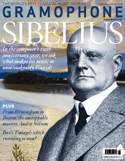Texte paru dans: / Appeared in: |
|
|
Outil de traduction (Très approximatif) |
|
|
Reviewer: William Yeoman
The exquisite chaconne from the final concerto of Vivaldi’s La stravaganza may be worth the entry price alone. But this second set of 12 concertos for violin and strings with continuo – published, like the hugely influential 1711 set L’estro armonico, by Estienne Roger of Amsterdam – positively o’er brims with further musical delights. So it’s hard to believe it was less well received than its predecessor, especially when performed by such persuasive advocates of Vivaldi’s bravura originality as Italian period instrument band Armoniosa and violinist/director Francesco Cerrato.
Cerrato and Armoniosa enter, well, if not a crowded field then one distinguished more by quality than quantity, and among my enduring favourites are the suavely elegant Monica Huggett with the Academy of Ancient Music under Hogwood, the characterful Rachel Podger with Arte dei Suonatori and the ardently stylish Fabio Biondi with Europa Galante (Virgin, 7/11 – though the latter’s is not a complete recording). But the new kids on the block – Cerrato founded Armoniosa only in 2012 – have convincingly staked their claim with this debut recording for MDG. Using both harpsichord and organ continuo for colouristic effects throughout, the general approach is however immediately apparent with the opening B flat major concerto. The strongly accented down-bows of the Allegro anchor a gentler flow enlivened by strong contrasts between solo and concertante episodes, presaging Cerrato’s deliciously ornamented line in the Adagio before he cuts loose in the final stages of the closing Allegro with some typically Vivaldian high-register passagework.
And so it goes on. Armoniosa
render the following dramatic E minor concerto (No 2) with the requisite
chiaroscuro, connecting with the sfumato of the atmospheric slow movement of
the A minor concerto (No 4), marked Grave e sempre piano. The relaxed
expansiveness of the Largo of No 7 in C – the only fourmovement concerto – is
masterly and recalls La Serenissima’s approach (Avie, A/09). The brisk
antiphonal exchanges between the two solo violins in the D major No 11’s
Allegro create an electricity that dissipates in the following Largo, which
features a particularly rich cello accompaniment. An impressive debut indeed.
|
|
|
|
|
|
Cliquez l'un ou l'autre
bouton pour découvrir bien d'autres critiques de CD |
|

/0760623188560.jpg)


